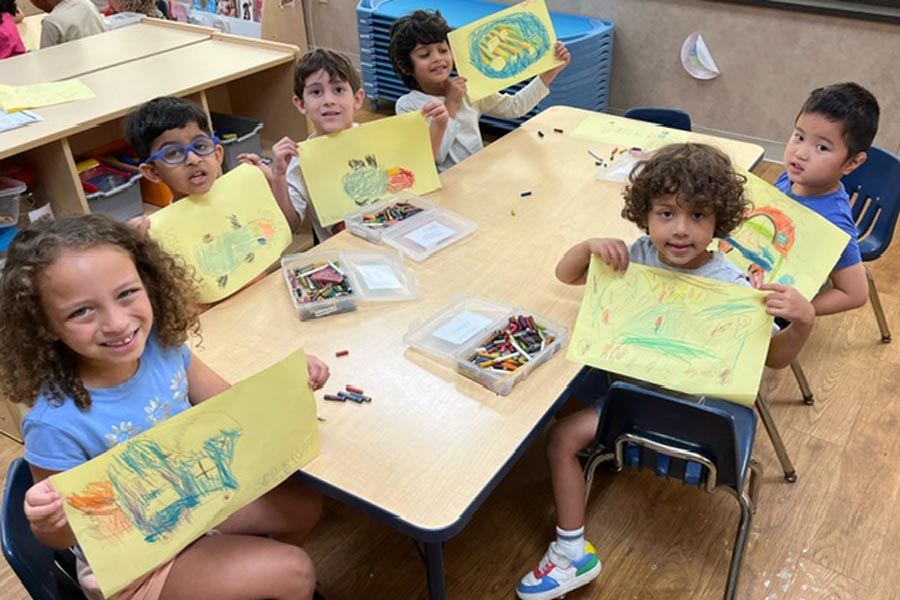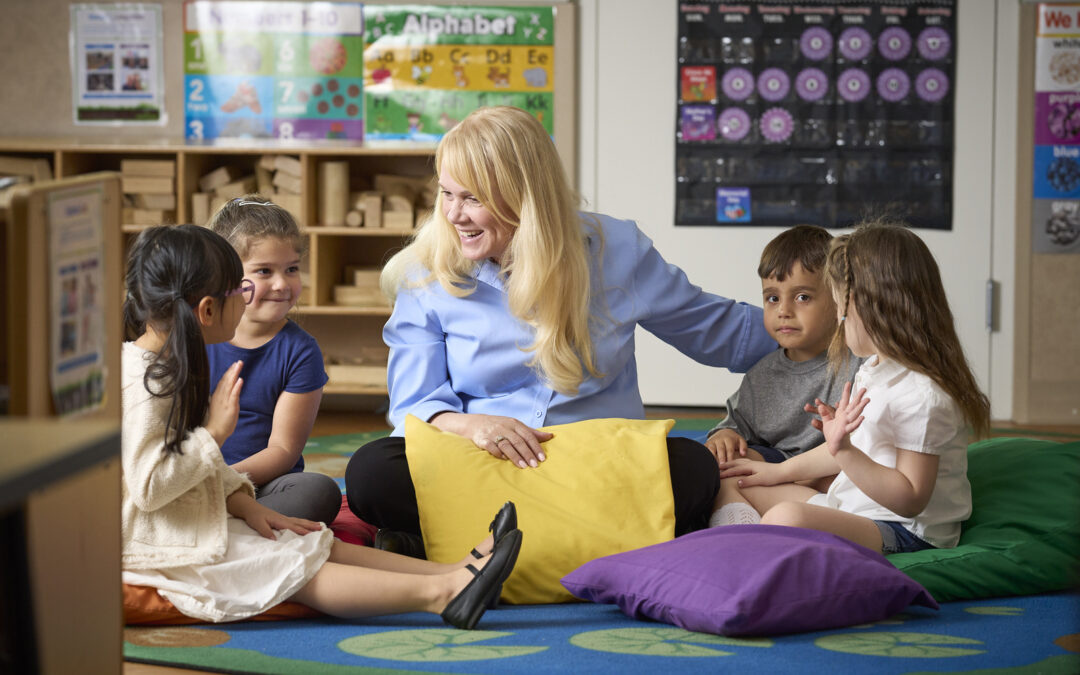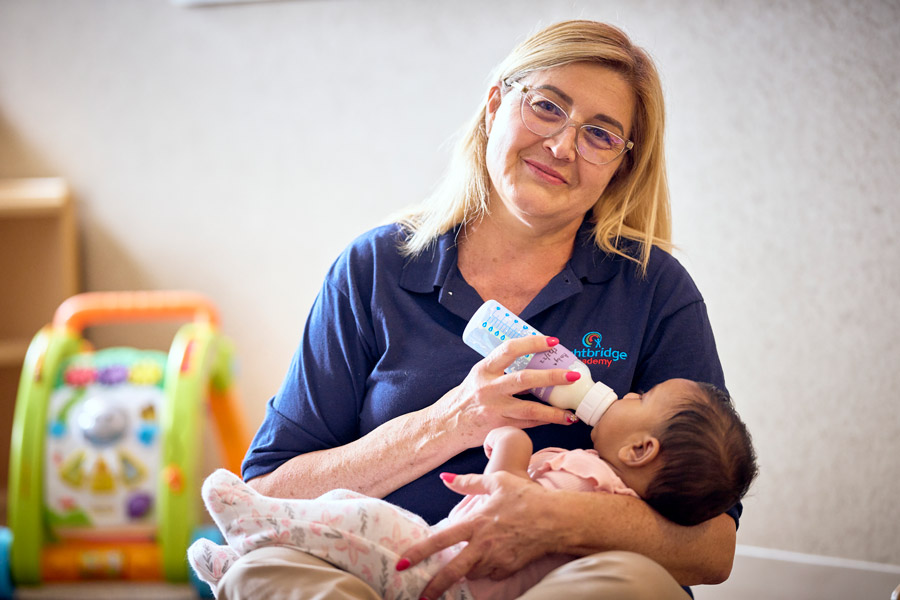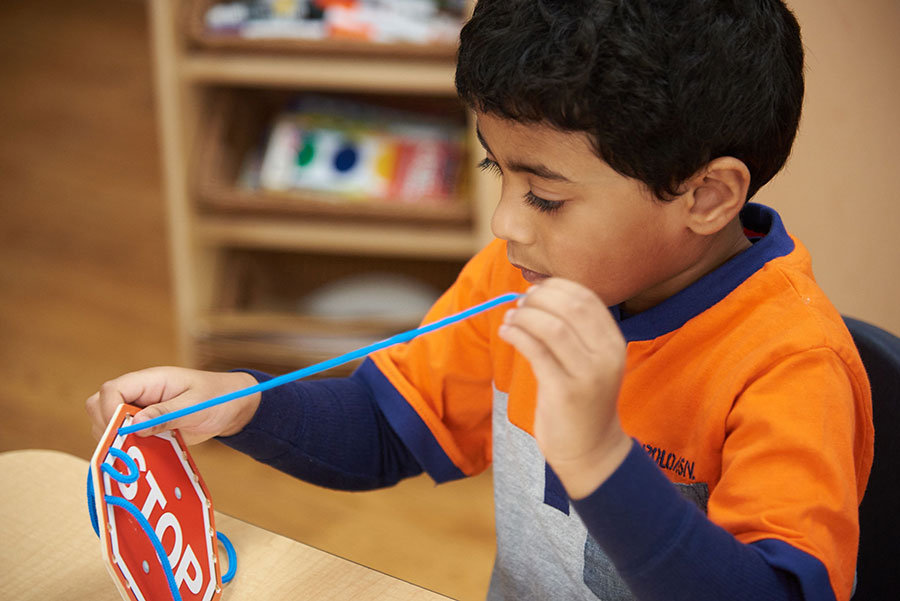Watching your little one take their first steps into learning is an exciting milestone! The right preschool curriculum will nurture your child’s curiosity, build their confidence, and lay the foundation for a lifetime of discovery.
An important role of preschool education is to prepare children for kindergarten and elementary school. They’ll begin learning age-appropriate classroom behavior as well as how to learn through play.
Checklist: What to Look for in a Preschool Curriculum
Parents can find the best preschool program for their children. This checklist covers important elements of a preschool curriculum that will prepare your child for a lifetime of learning.
1. A Curriculum Rooted in Proven Educational Philosophies
As a parent, you know that every child is unique! The best pre-k curriculum for your child will be based on educational philosophies that align with your goals. Some early learning centers follow the philosophy that solely focuses on academics, while others elevate the philosophy of child-led learning through play.
At Lightbridge Academy®, our proprietary Seedlings® Early Childhood Education Curriculum integrates principles from early childhood experts like:
- Jean Piaget – Developmentally appropriate lessons based on how children acquire knowledge at different stages.
- Howard Gardner – A multi-sensory approach that respects different learning styles.
- Maria Montessori – A whole-child focus that encourages independence and hands-on exploration.
- Loris Malaguzzi – Child-led learning where observations guide instruction.
- Fredrich Fröbel – Learning through play to foster creativity and social skills.
2. Comprehensive Subject Areas That Build Future-Ready Skills
Parents should also know what subjects their child will study. Even at three or four years old, children thrive when exposed to a variety of subjects—from science and art to music and movement! Some approaches can place too much emphasis on one area or another. Finding a balance between school subjects as well as age-appropriate skills development for your preschooler is key.
A well-rounded child development program should cover essential areas like:
- Language and Literacy – Pre-reading, vocabulary expansion, and early writing skills.
- Mathematics and Science – Hands-on problem-solving, number recognition, and exploratory learning.
- Creative Arts and Music – Expression through art, rhythm, and musical instruments.
- Physical Development – Large and fine motor skill activities.
- Social and Emotional Growth – Confidence, independence, and cooperation.
These subjects promote cognitive growth and foster critical skills to support kindergarten readiness and long-term academic success.
3. A Balance Between Teacher-Guided and Child-Led Exploration
From encouraging creativity to piquing interest in new subjects, a balance between teacher- and child-led activities is the goal of any high-quality preschool curriculum.
At such a young age, preschoolers benefit from teacher-guided learning and activities. This structure helps your child prepare for future classroom experiences. Teacher-guided learning also helps young children develop listening skills and the ability to focus. These activities can also increase attention spans.
However, independent play or child-led exploration is equally important to the development of each child. Because preschoolers naturally have short attention spans, using various learning methods is the best approach. For example, a teacher may teach preschoolers about tigers and later have an art project that reinforces the lesson.
4. Enrichment Programs That Elevate Learning
Additional programs can help your child fall in love with learning! At Lightbridge Academy, we offer programs like Singing Sprouts, Spanish Sprouts, and Learning Without Tears®.
Through fun and multi-sensory learning programs, your child can learn foreign languages and age-appropriate writing skills. These programs are designed to introduce preschoolers to specific subjects and position your child for success in the upcoming school years.
5. Technology That Supports Learning
As a key component of preschool education, technology can be a powerful tool to build skills and curiosity. While many preschoolers may be exposed to technology at home through television or handheld devices, learning through technology can create new skills and encourage curiosity.
Instead of serving as entertainment, technology in the classroom is a powerful tool that supports cognitive development by encouraging children to explore, investigate questions, and solve problems. Interactive whiteboards and tech tables bring lessons to life through virtual field trips, learning games, and oversized story interactions. These tools engage both visual and kinesthetic learners, increasing student motivation, enhancing class participation, and making learning more dynamic and memorable.
Additionally, age-appropriate technology helps children build digital literacy, essential skills for future academic success.
Why Lightbridge Academy’s Seedlings® Curriculum Stands Out
At Lightbridge Academy, we prioritize a holistic approach, enabling children to grow and develop physically, mentally, and emotionally.
Lightbridge Academy also places a strong emphasis on social-emotional learning (SEL), helping children develop resilience, problem-solving skills, and empathy—important qualities that set them up for success in kindergarten and beyond. Your child will improve language skills while interacting with other children. Learning to share or express emotions appropriately allows preschoolers to develop social skills and emotional intelligence at an early age.
Instead of a sole academic focus, we prioritize the whole child. The Seedlings® Early Childhood Education Curriculum is an ideal preschool curriculum for parents who want to give their children a quality early education experience. We value a holistic approach, teaching children age-appropriate academic lessons while incorporating creativity and play into the learning experience.
One parent shared their experience saying, “When I asked my daughter what she did today, she said, ‘We visited a watering hole in Africa and watched the antelope!’ and then shared details. I am thrilled with how engaged she is with learning.”
Schedule a Tour
A strong preschool curriculum is the introduction to formal education for your child. The right curriculum ensures your child develops the confidence, curiosity, and social skills needed for kindergarten readiness.
Learn more about Lightbridge Academy’s preschool curriculum! Discover how our classrooms can spark curiosity and confidence in your child. Schedule a tour today!







